Wallpaper* checks in at Rosewood Miyakojima: ‘Japan, but not as most people know it’
Rosewood Miyakojima offers a smooth balance of intuitive Japanese ‘omotenashi’ fused with Rosewood’s luxury edge
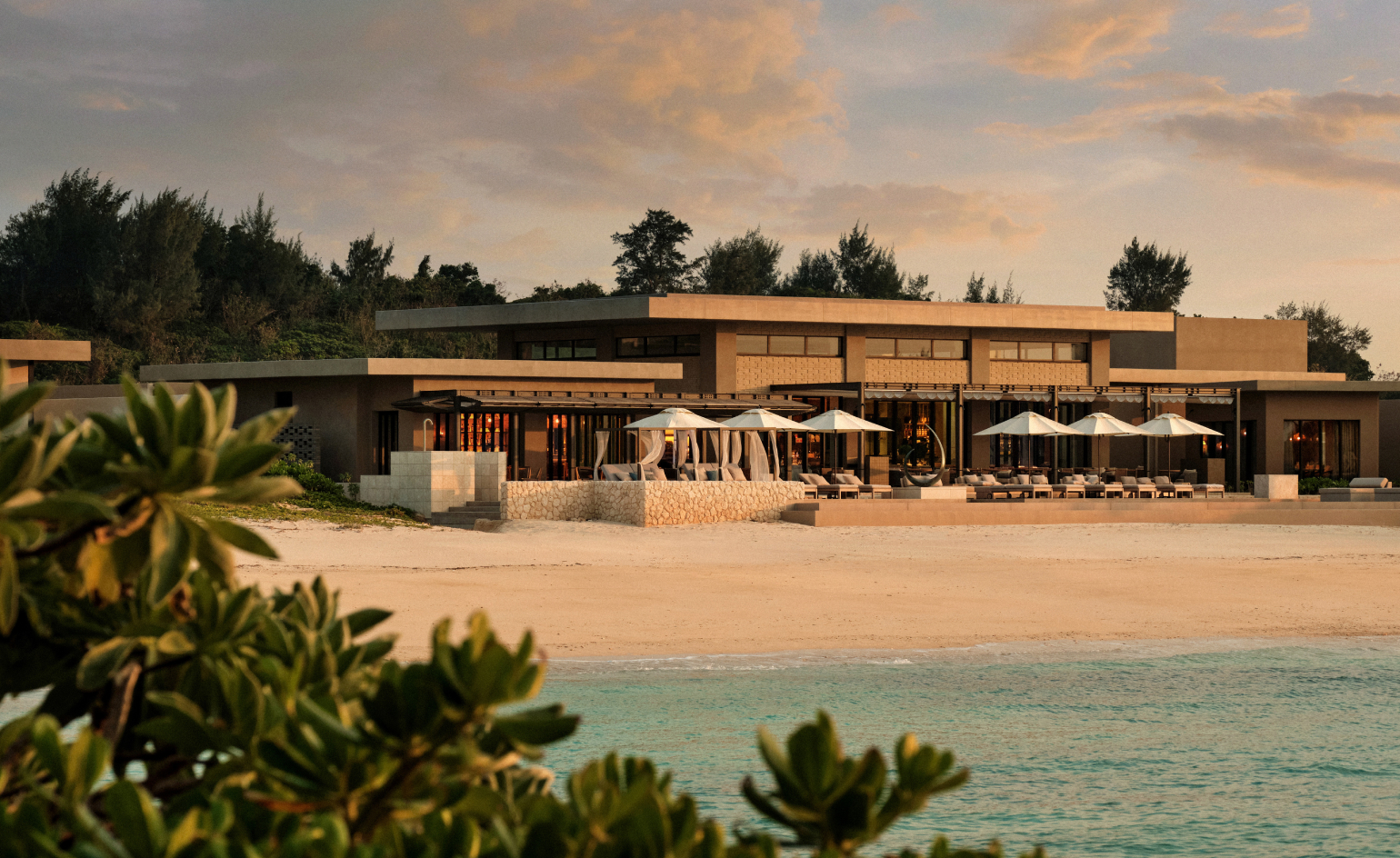
Picture a small Japanese island with white sand beaches, coral reefs, swaying sugarcane, rugged limestone rocks, seas in shifting shades of blue – and a minimalist scattering of modernist villas in landscape-reflecting tones and textures. This is the scenically remote setting for the latest addition to the Rosewood Hotels family, set on the far-flung nature-drenched island of Miyakojima in Okinawa, the southernmost region of Japan.
Wallpaper* checks in at Rosewood Miyakojima
What’s on your doorstep?
Forget skyscrapers and 24-hour neon: Miyakojima is one of the necklace-like trails of subtropical islands in the Okinawa region, closer to Taipei than Tokyo. It’s easier than imagined to get there, with direct flights from Tokyo (three hours) and Osaka (two and a half hours). Many visitors to Okinawa are fast seduced by its laid-back tempo, subtropical landscape, vivid corals, colourful cuisine and unique culture. Rosewood Miyakojima flows across a curved coastal area wrapped in nature: picture time-weathered Ryukyu limestone rocks, two beaches of white sands and sparkling seas. It’s a deeply spiritual corner of the island, home to several sacred spots known as utaki – places of natural beauty where the gods are said to reside and humans are respectfully discouraged from entering, hotel guests included.

Who is behind the design?
Rosewood Miyakojima – the Japan debut for the Hong Kong group – was sensitively designed by Holland-based Studio Piet Boon to blend into its rich natural backdrop of seas and skies, rocks and forests. A clean-lined collection of 55 concrete villas and houses in earthy shades sit on beaches, rocky shores and hillsides, alongside four restaurants and bars, a seafront infinity pool and an escapist wellness space.
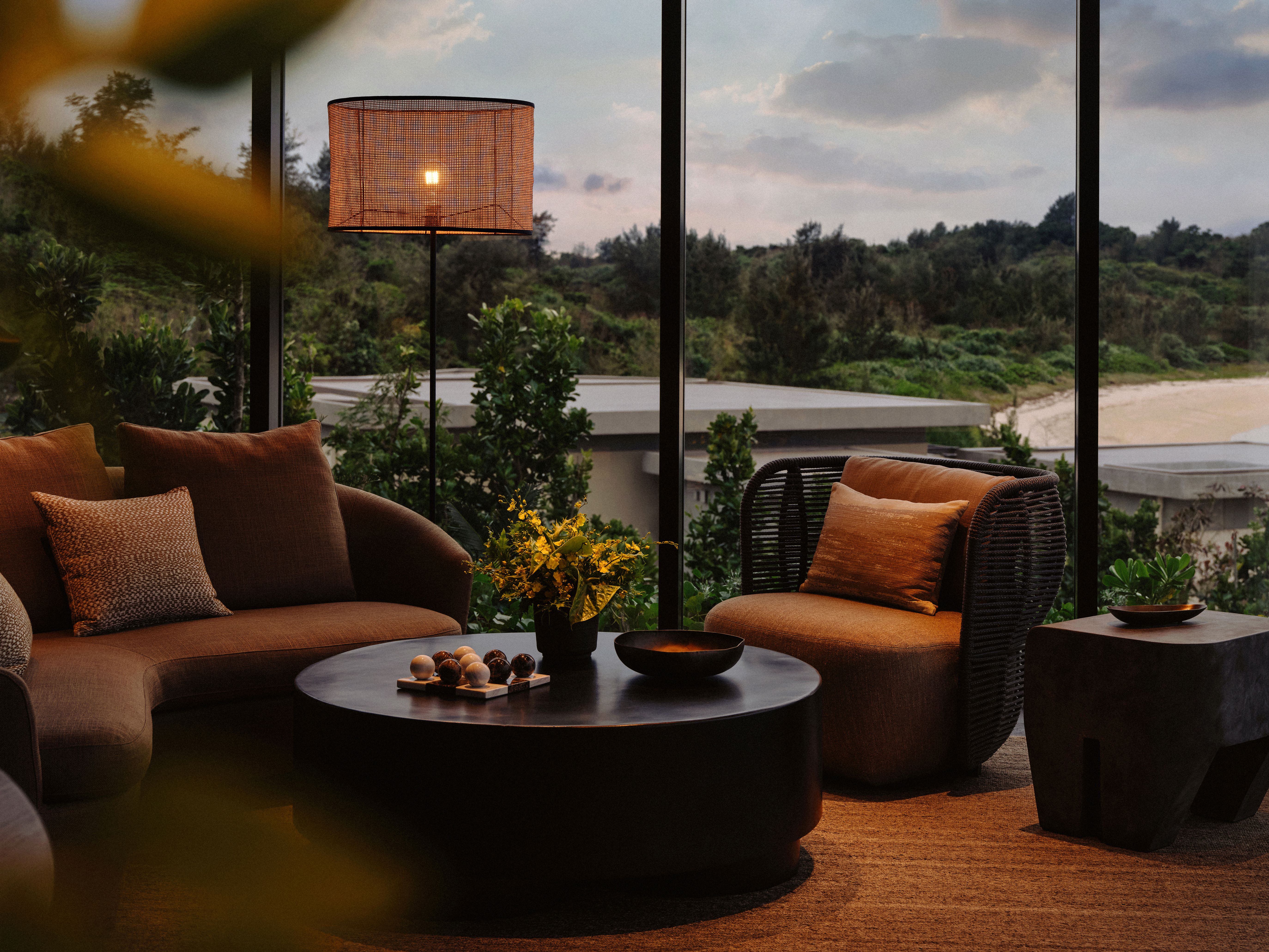
Nature is the main protagonist. For designer Piet Boon, the five-year design journey was all about harmonising the hotel with the setting – both aesthetically and culturally. The structures – concrete and clean-lined – are designed to blend into the setting, with facades coloured in earthy browns, clay tones and greys. Expanses of white Ryukyu limestone rocks (on walls and pathways) will darken with time, matching the rock-lined shores. ‘The first time I visited, I thought I was in the Caribbean, with all the blues and the sand,’ Boon tells Wallpaper*. ‘We had to design something here which blends into this, nothing too spectacular. It’s very minimalistic and designed to harmonise with nature. It was also very important for the local community to embrace it. As it’s Rosewood, of course, it has to be high-end – but it’s more barefoot chic.’
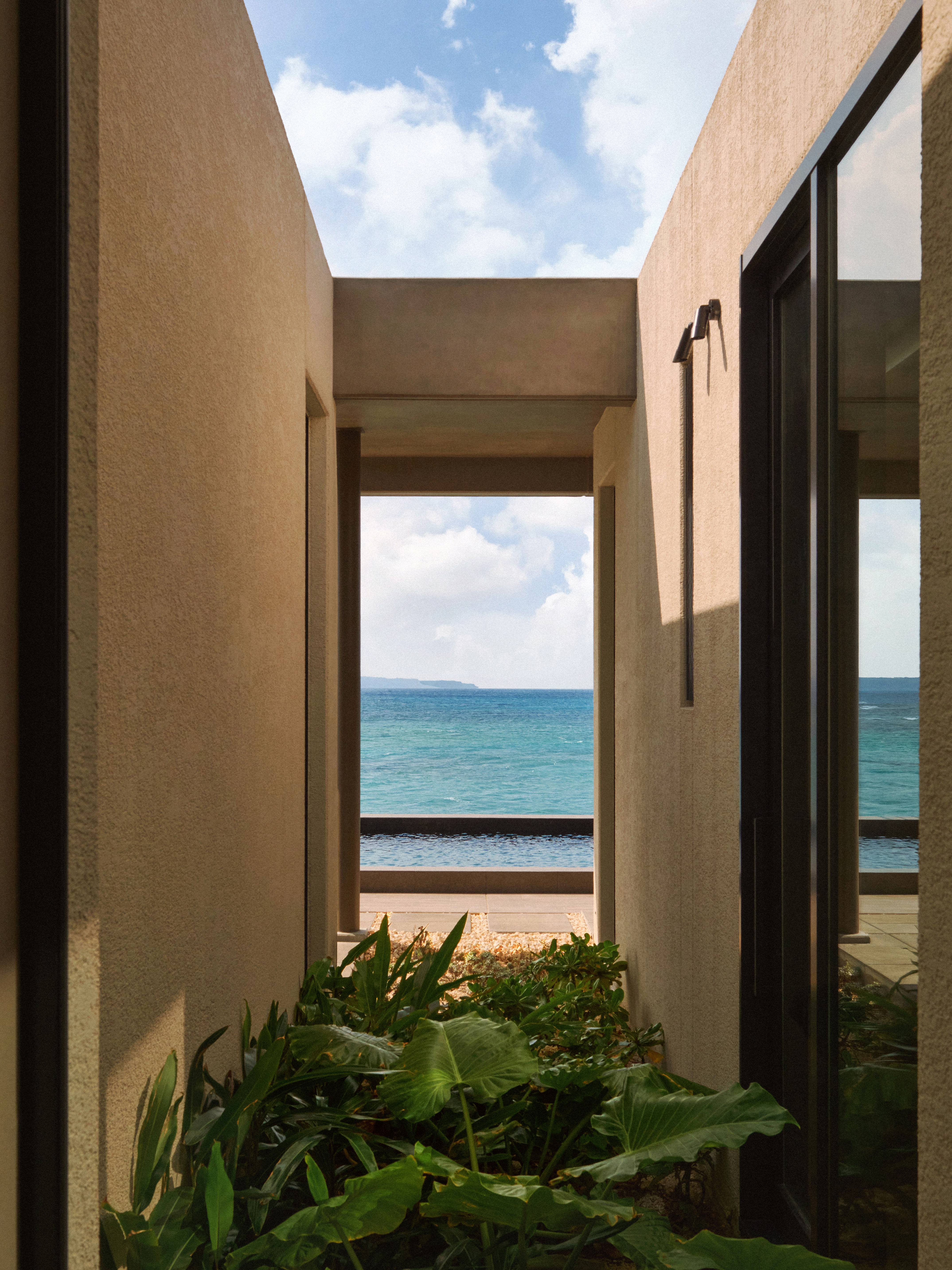
The villa to book
The softly hilly landscape is home to five groups of villas, each with subtly shifting settings – clifftop Daya with sea views; Mui, tucked into the mountainside; sea-wrapped Miji on the peninsula; Uru overlooking a white beach; and Isu on a rocky shoreline. Each villa shares a clean-lined minimal concrete structural form tempered by the warmth of layered textures, a natural palette and hints of Japan.
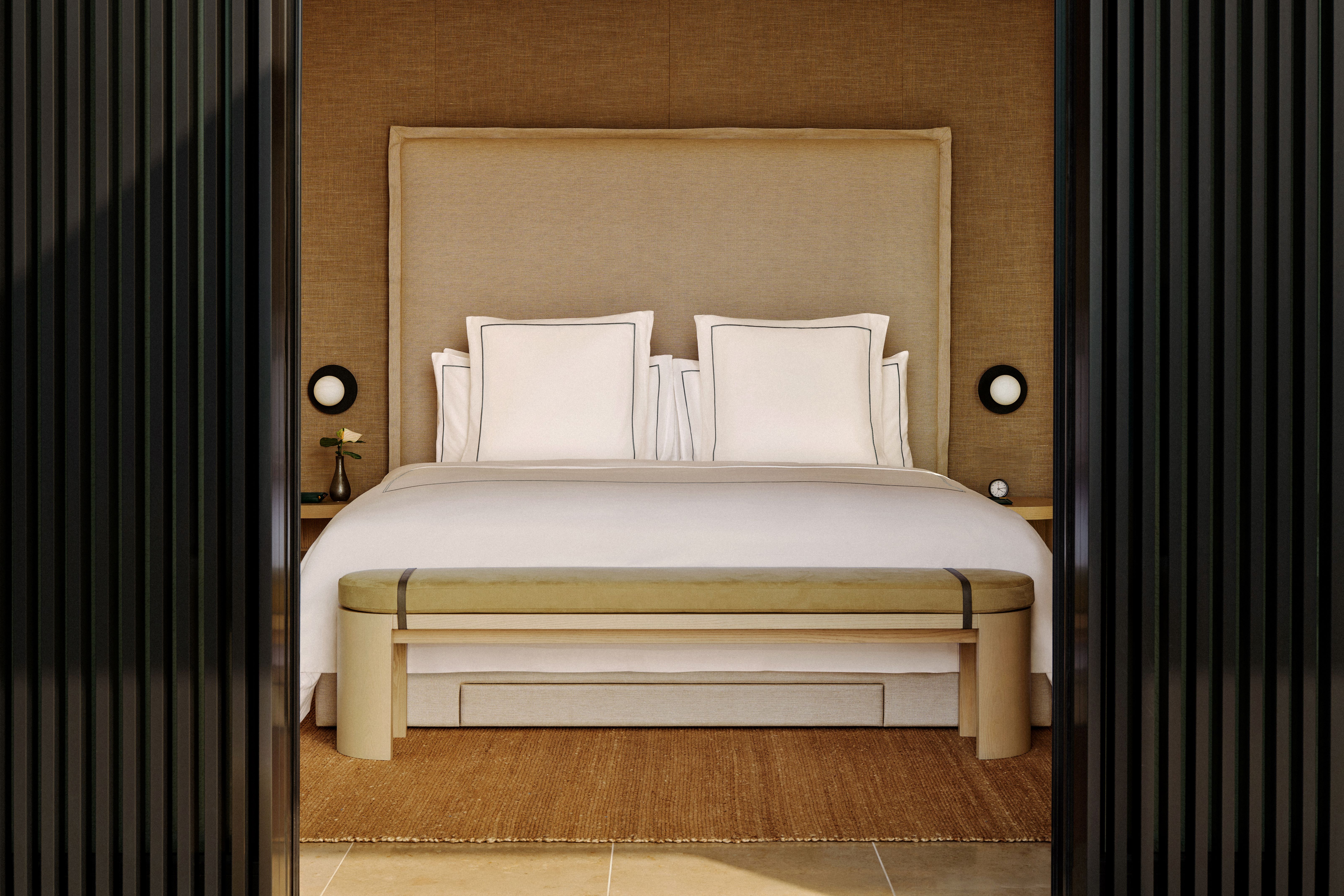
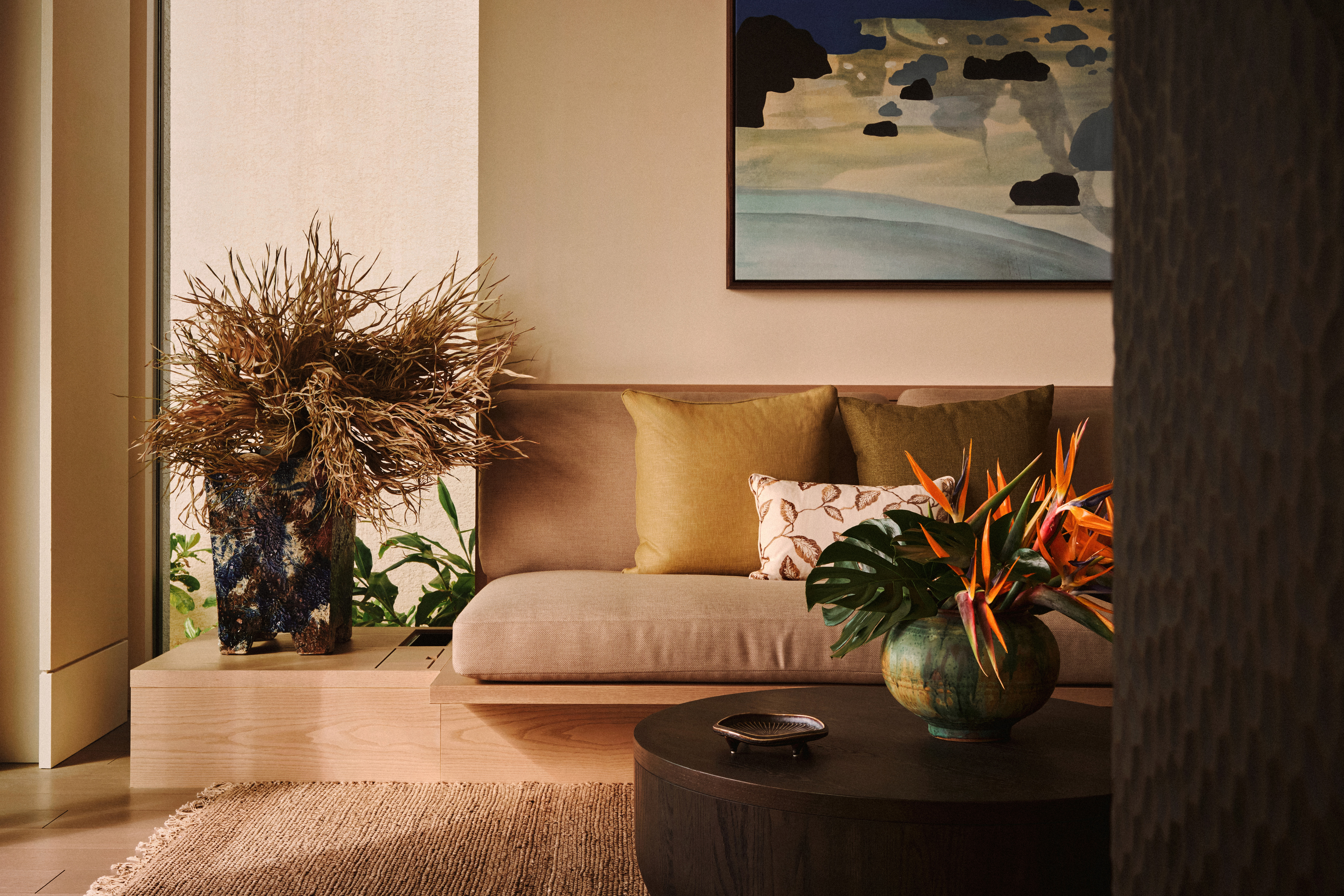
There are contemporary stone genkan for slipping off shoes; textiles and woods in light watery greens and greys; softly curving furniture, sliding doors, organic-shaped mirrors, modern white lanterns and abstract blue sea-inspired watercolours. Walls of glass lead onto terraces with private pools. Bathrooms are spacious and comfortable, with honey-hued stone, large bathtubs and herb-filled salts. ‘Natural materials and subtle tones create a seamless transition between indoors and out,’ says Boon. ‘Every detail enhances this sense of immersion.’ There are also three scene-stealing houses, which are perfect for big groups, with large private terraces (plus pools-with-a-view and barbecue grills) overlooking the sea.
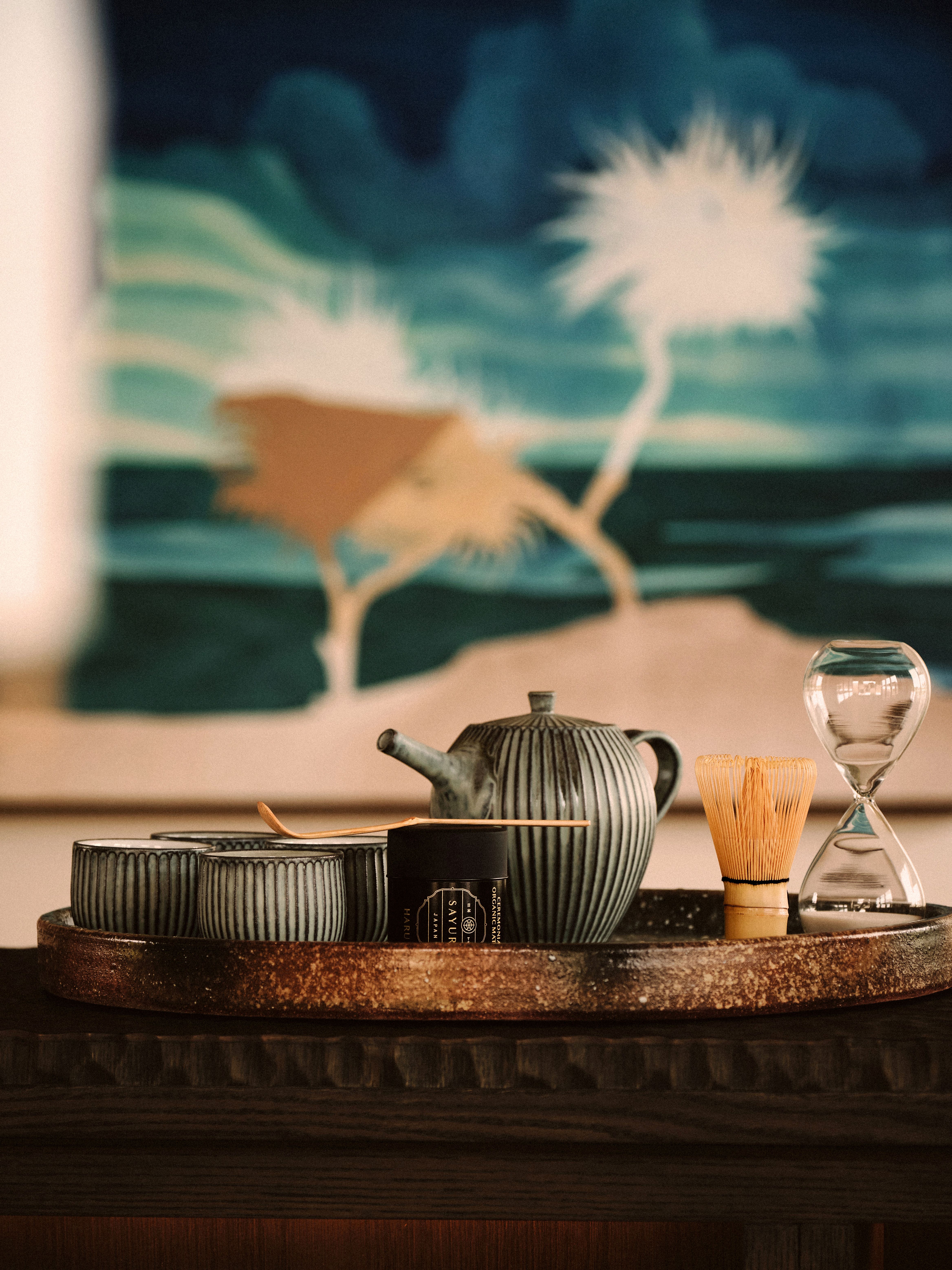
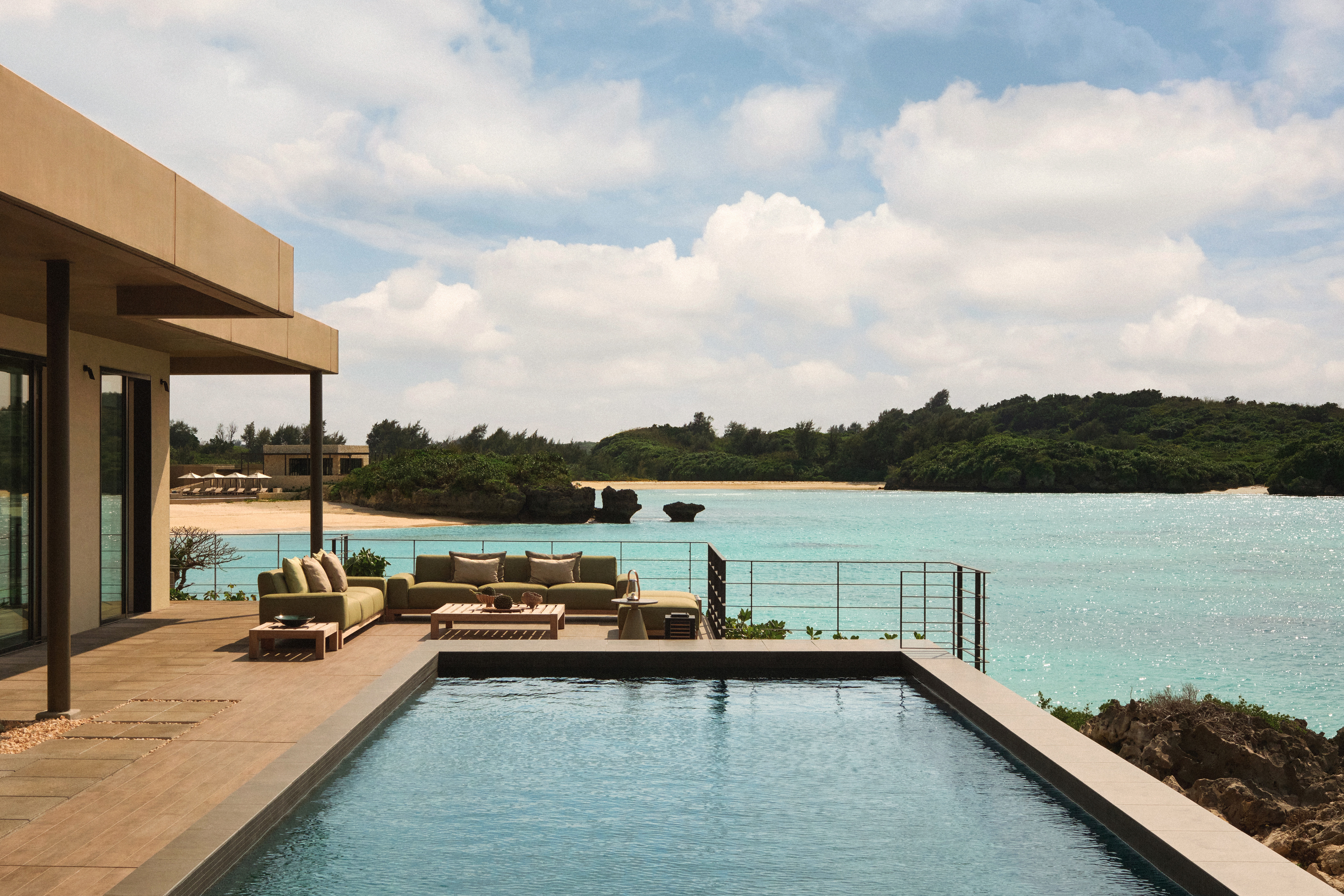
Mini bar highlights?
A cornucopia of local treats are in the room – from ceramic flasks of fiery local spirit awamori and butterfly pea tea (as blue as the sea) to fried dough cakes and mango sweets plus fresh juices and yuzu kombucha.
Receive our daily digest of inspiration, escapism and design stories from around the world direct to your inbox.
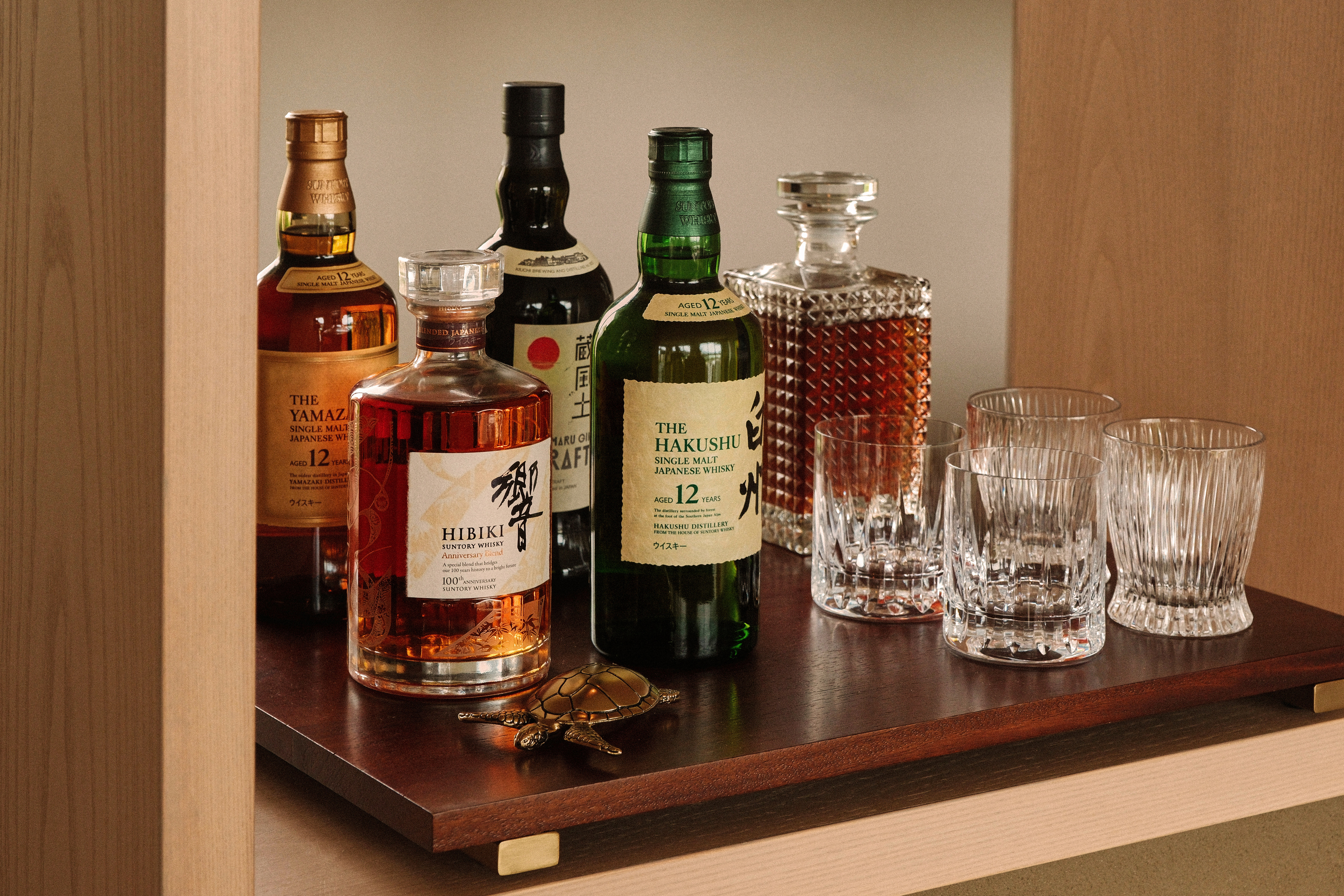
Where to switch off
Rosewood’s signature spa concept Asaya – meaning self-change in Sanskrit – is a serene hub of natural interior textures, green plants and escapist treatments, unfolding in six private rooms. Guests can unwind in a hydrotherapy and sauna space or around a quiet, curved outdoor pool. A spa highlight is the Synergyflow treatment, a massage with long, sleep-inducing strokes using one of five signature oils connected to the elements, such as Water, a dreamy blend of geranium, juniper and thyme.
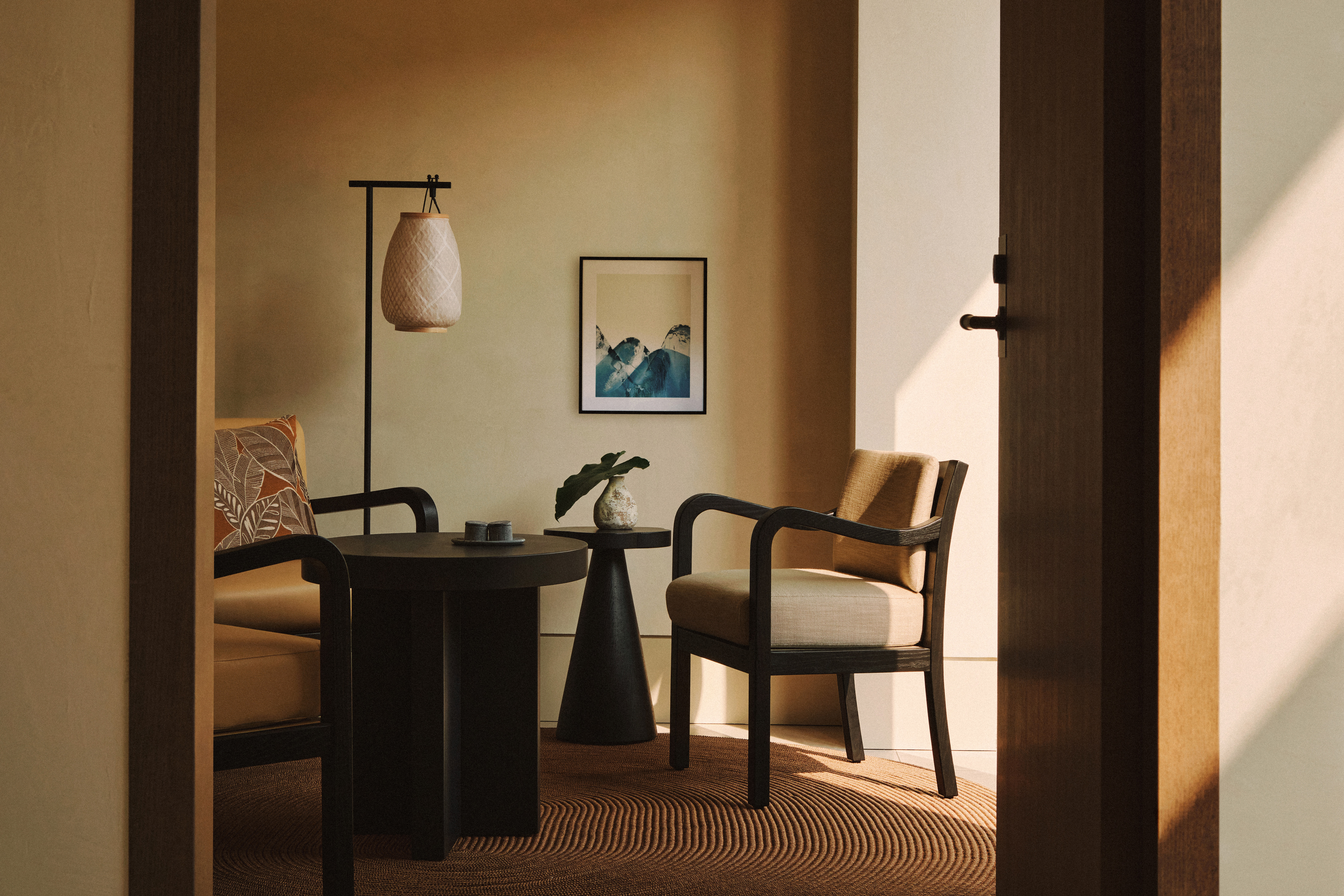
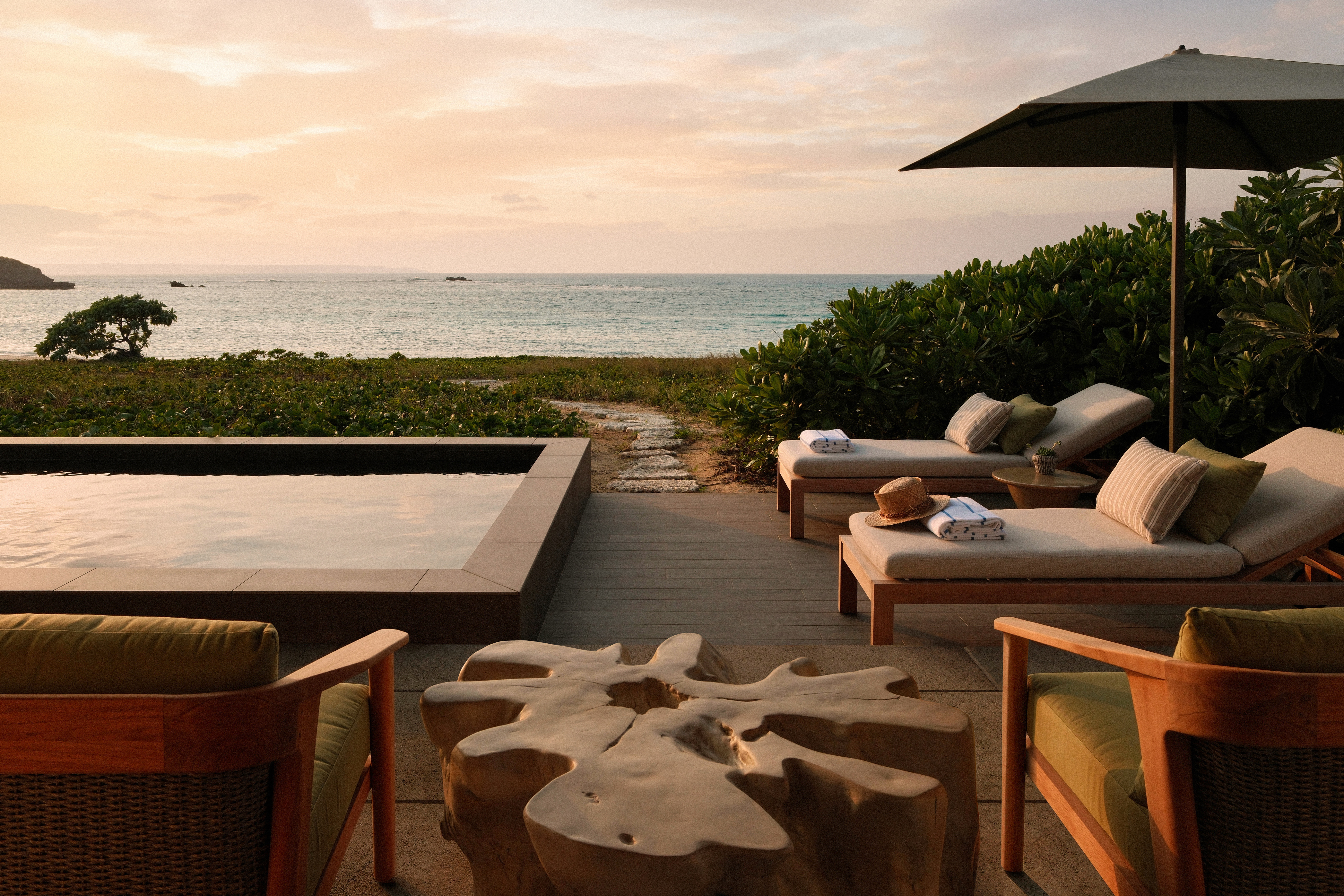
Staying for drinks and dinner?
The hotel’s heartbeat is Nagi (‘calm sea' in local dialect) – a contemporary restaurant that spills out of an airy double-height interior onto a terrace. It overlooks a minimalist infinity pool, with a sculpture, curved and abstract, at the centre – and just beyond, the beach and sea. Here, a leisurely breakfast unfolds, including Japanese treats such as Mikojima tofu, salmon onigiri and edamame chawanmushi (savoury egg custard) alongside Western options. Outside breakfast, the menu includes contemporary Italian dishes, rooted in local ingredients, including slow cooked octopus and tasty king crab ravioli, with brown butter, sage and lemon.
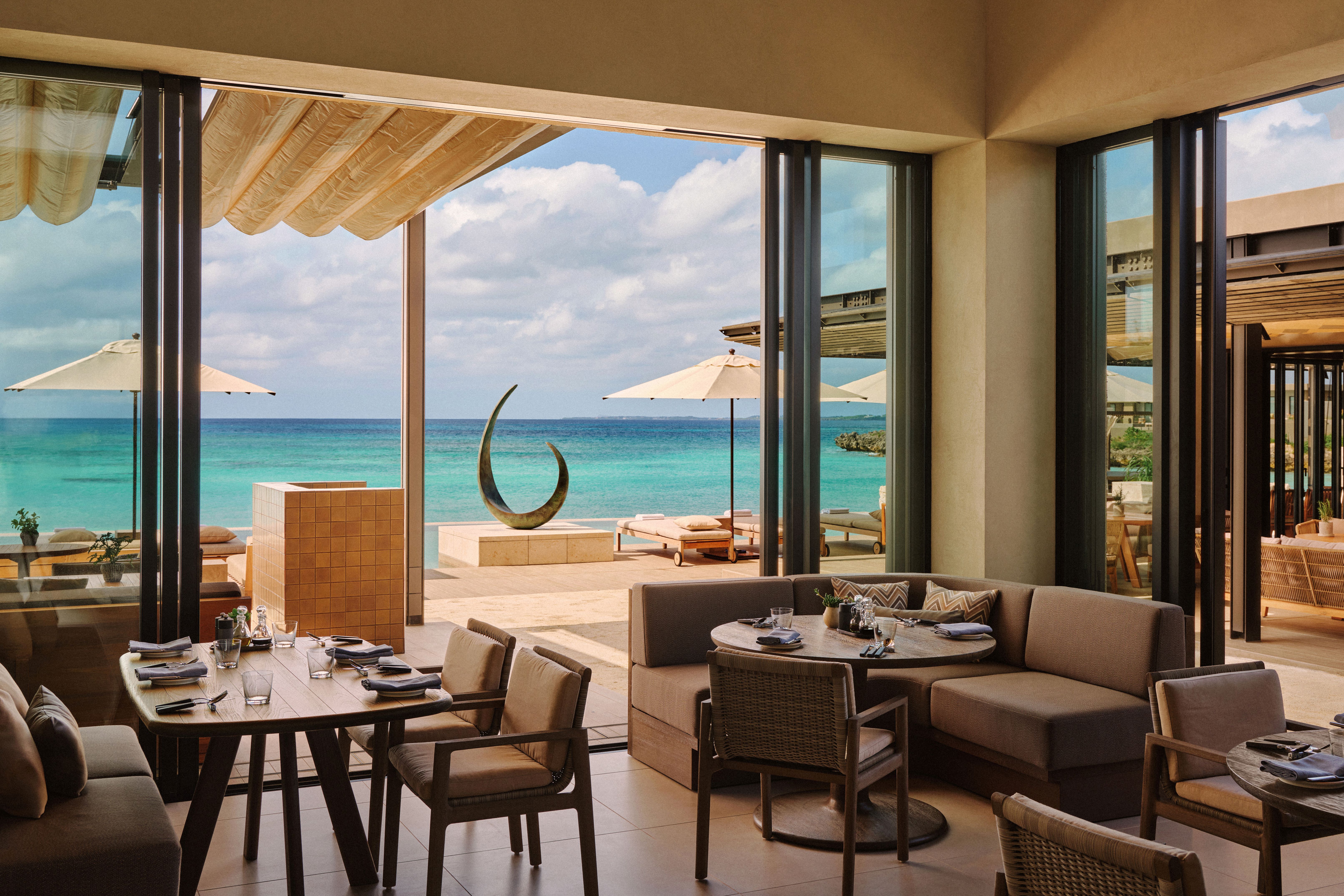
Next door is Yukuu, a bar serving inventive modern Okinawan cocktails alongside snacks such as semi-dried sting-ray fin. Up the hill overlooking the sea is Maas – aka seafood heaven, with an open-air counter in a shack-inspired setting. Guests can tuck into maritime treats caught just along the coast by local fisherman Tanaka san who spearfishes only after dark, washed down with colourful cocktails such as salty pineapple Maas Sour. Japanese restaurant Choma, overlooking a scenic beach, will open later this year (an early preview of dishes includes Okinawan sashimi and island tofu with peanuts and mouth-popping local umibudou seaweed).
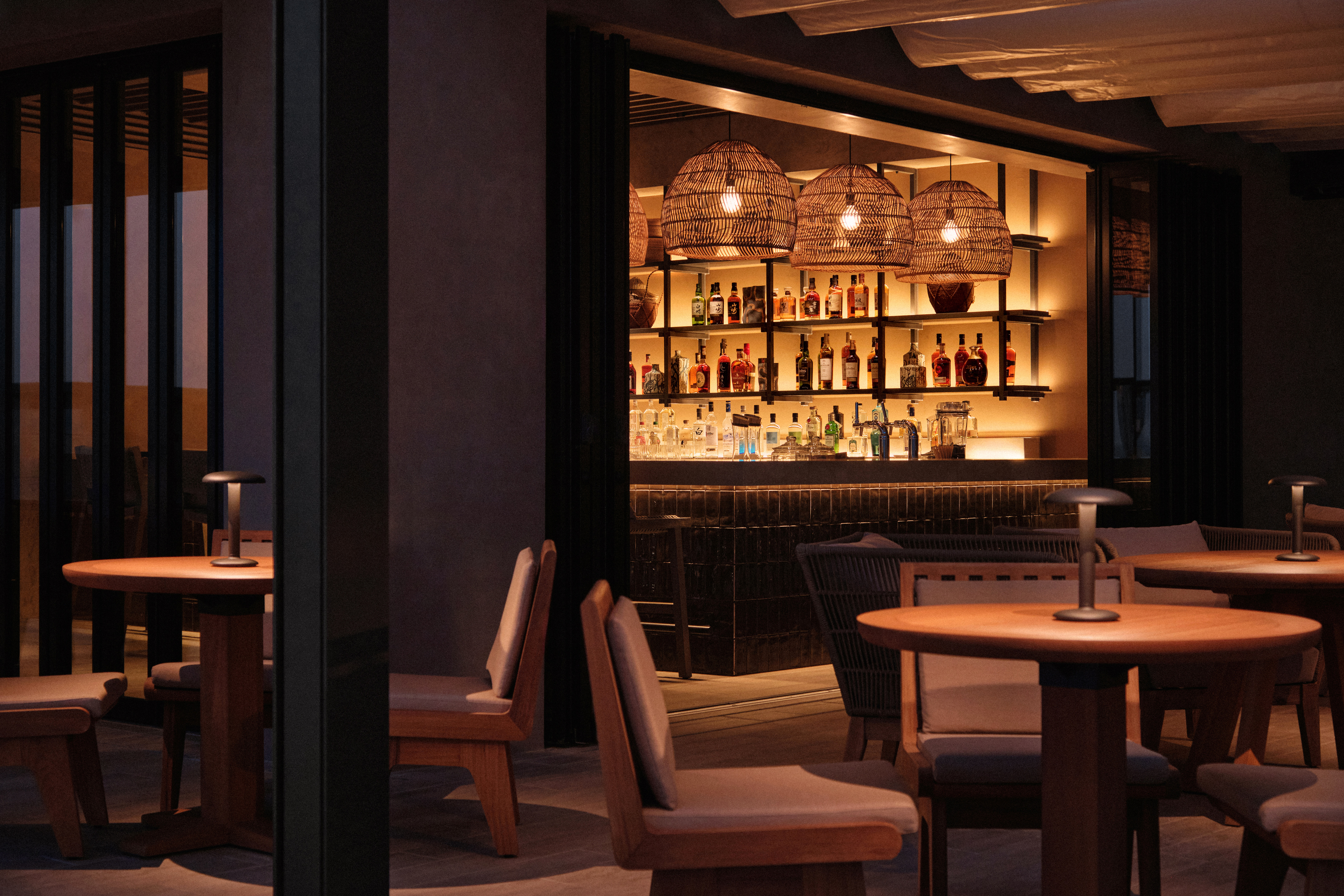
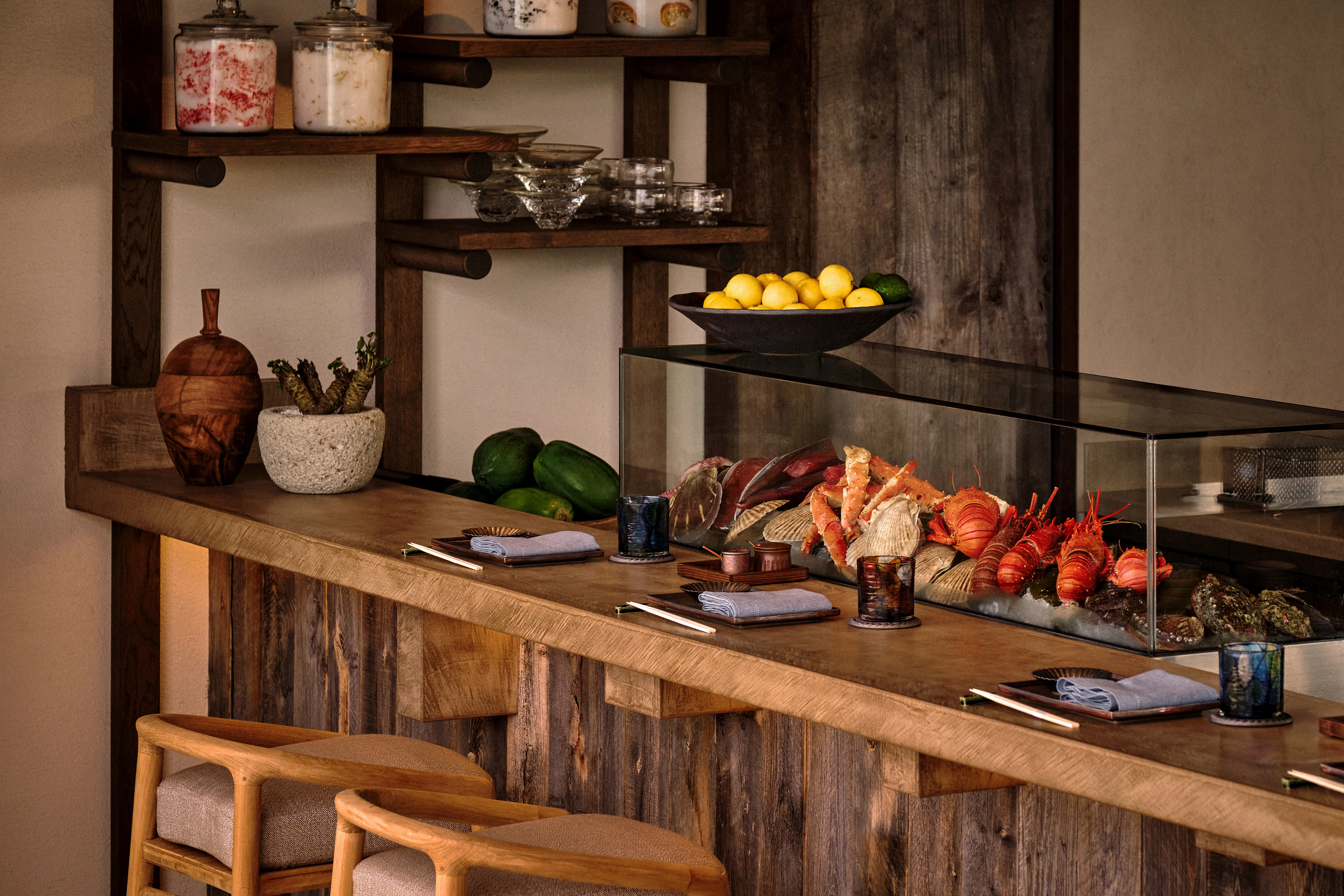
Walking the talk
It was clearly no simple journey. The hotel project took years of planning and delicate community building, particularly due to the sacred nature of its location. GM Noriko Nakayama – often spotted in flowing dresses with her pet turtle Maru in her arms – is also an environmental science expert, committed to preserving the landscape. As she explains over seafront tea: ‘People go to Tokyo for shopping and Kyoto for more historical culture. Okinawa is about connecting with nature. This is a very sacred, spiritual space and we are lucky to be here. Local priestesses came to bless and purify parts of the land with sake and water before construction. We are trying to create a space where people can enjoy the beauty of this nature while also understanding the culture.’
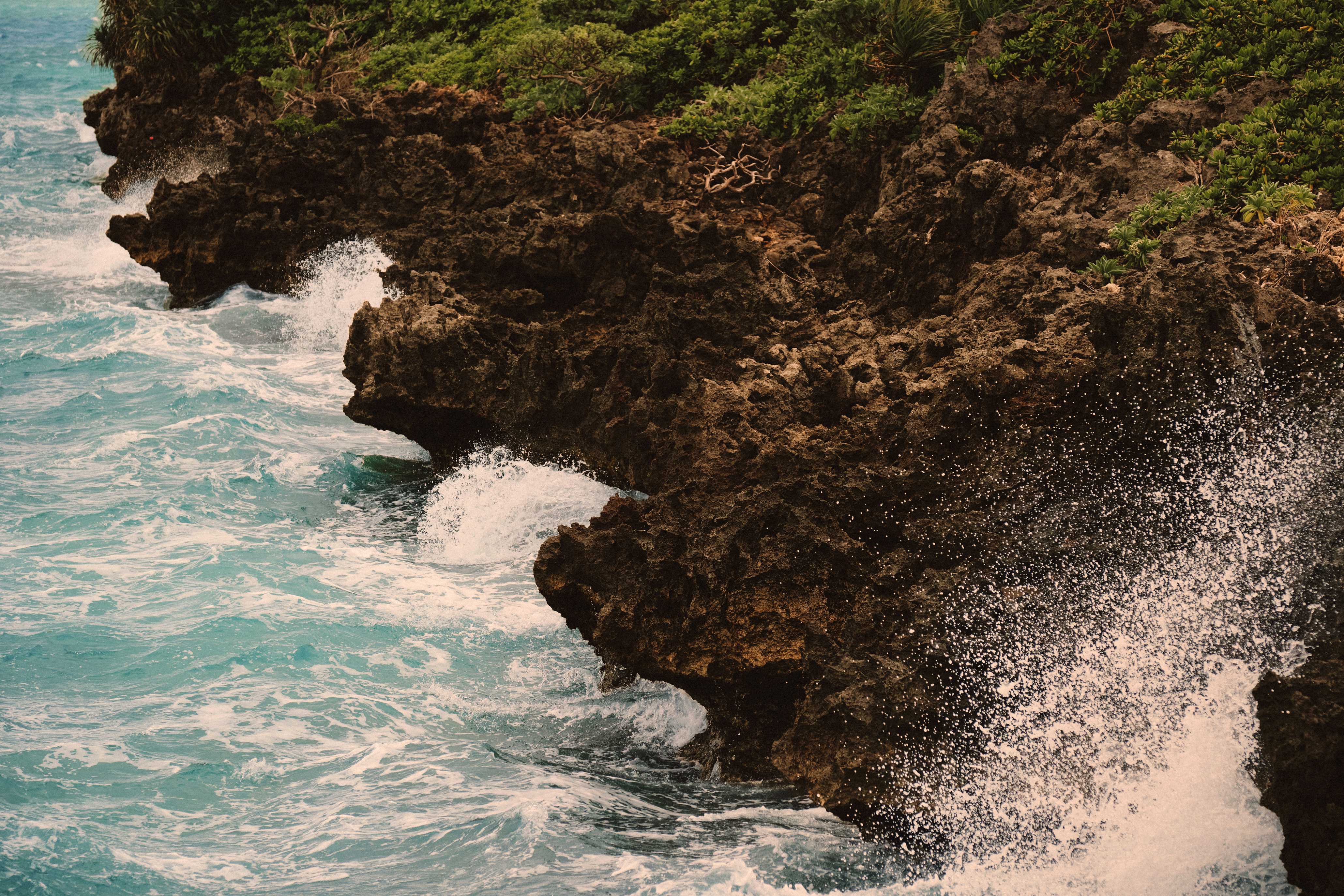
The verdict
Perfect for those keen to explore a lesser-known side of luxury Japan – fusing an escapist blend of exquisite nature, slow-tempo island life and Okinawan culture with a high-quality contemporary design with a luxury edge.
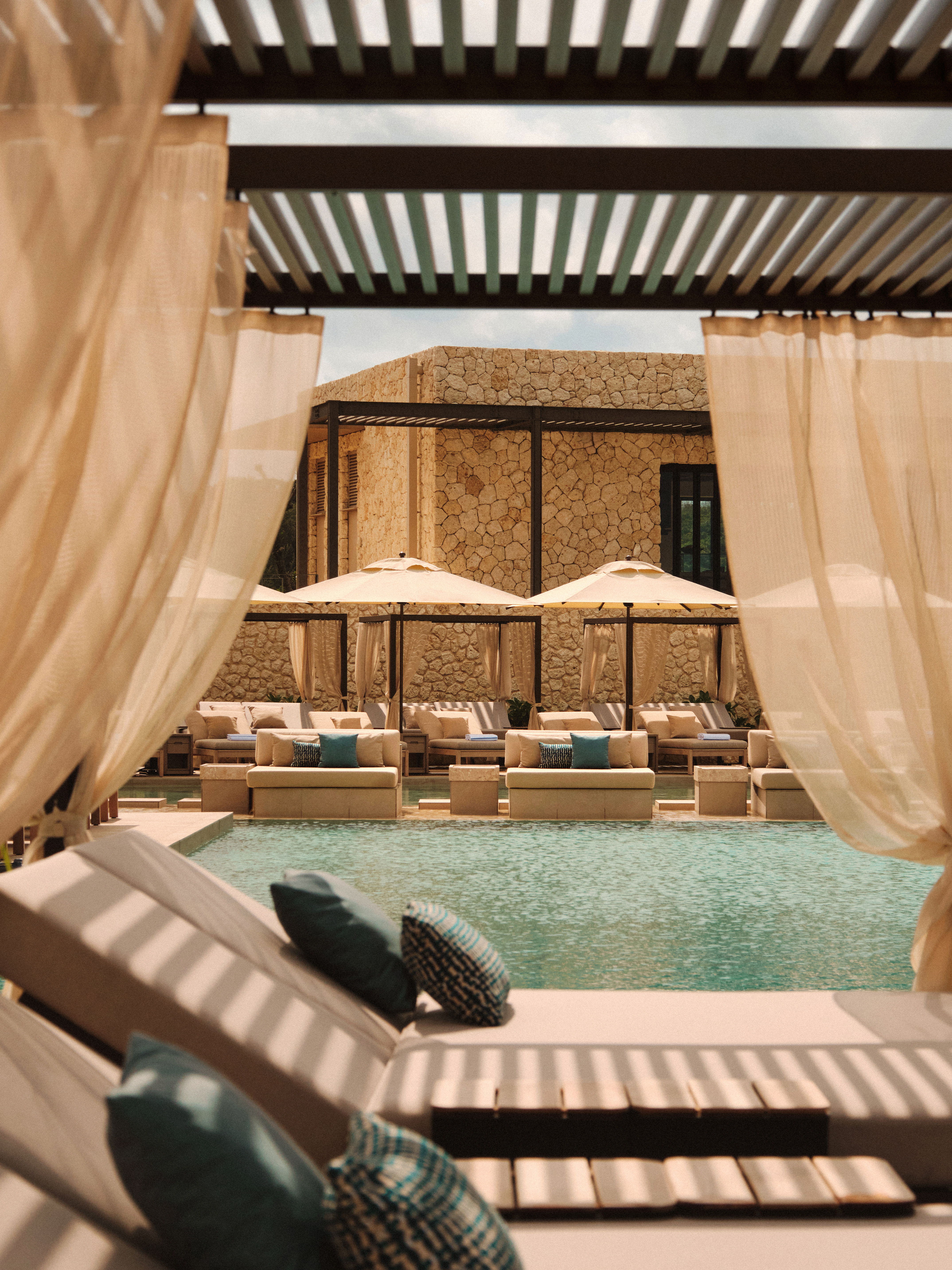
Rosewood Miyakojima is located at Nikadori-1068-1 Hirara, Miyakojima, Okinawa 906-0008, Japan; rosewoodhotels.com
Danielle Demetriou is a British writer and editor who moved from London to Japan in 2007. She writes about design, architecture and culture (for newspapers, magazines and books) and lives in an old machiya townhouse in Kyoto.
Instagram - @danielleinjapan
-
 A music player for the mindful, Sleevenote shuns streaming in favour of focused listening
A music player for the mindful, Sleevenote shuns streaming in favour of focused listeningDevised by musician Tom Vek, Sleevenote is a new music player that places artist intent and the lost art of record collecting at the forefront of the experience
-
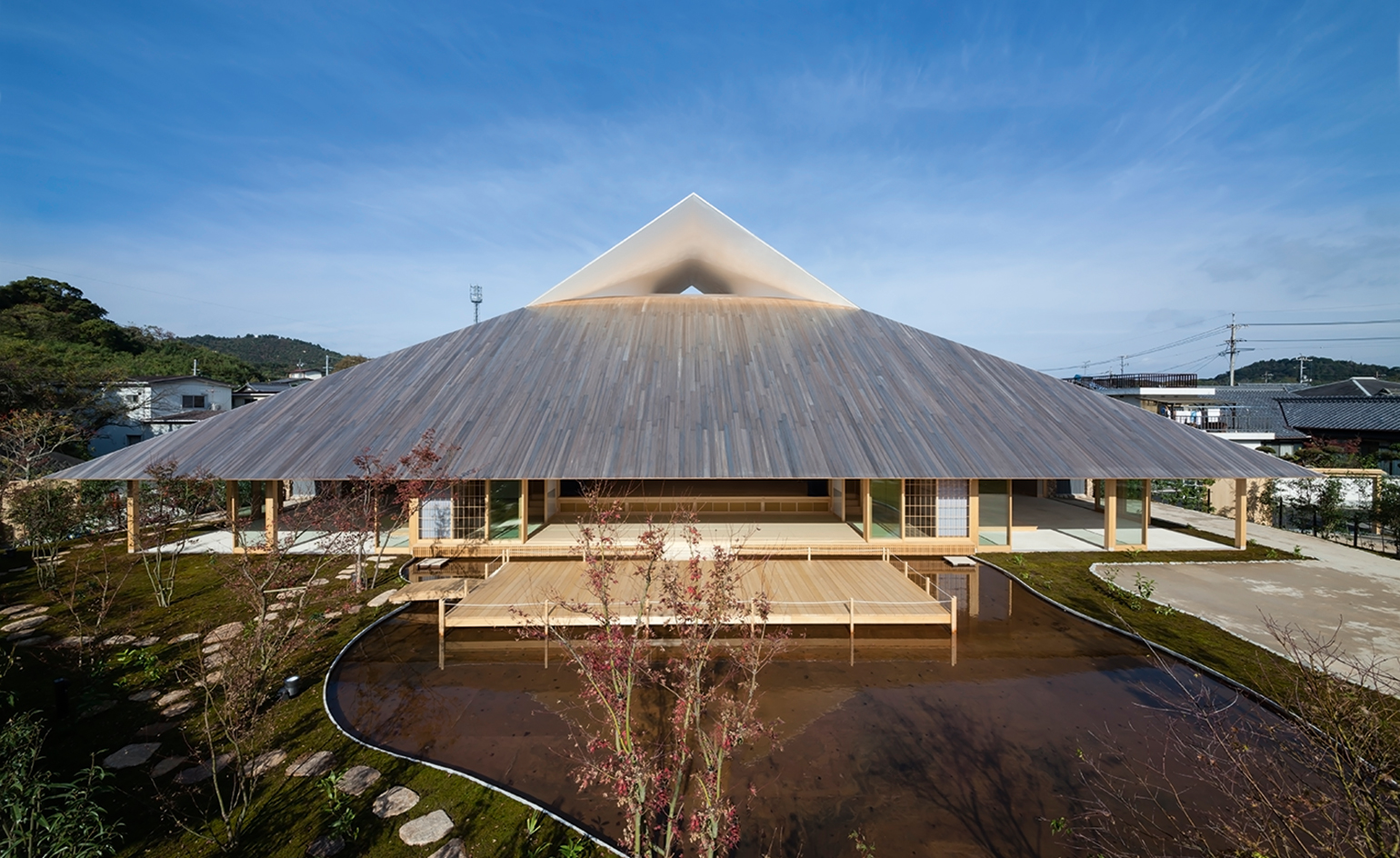 Take a tour of the 'architectural kingdom' of Japan
Take a tour of the 'architectural kingdom' of JapanJapan's Seto Inland Sea offers some of the finest architecture in the country – we tour its rich selection of contemporary buildings by some of the industry's biggest names
-
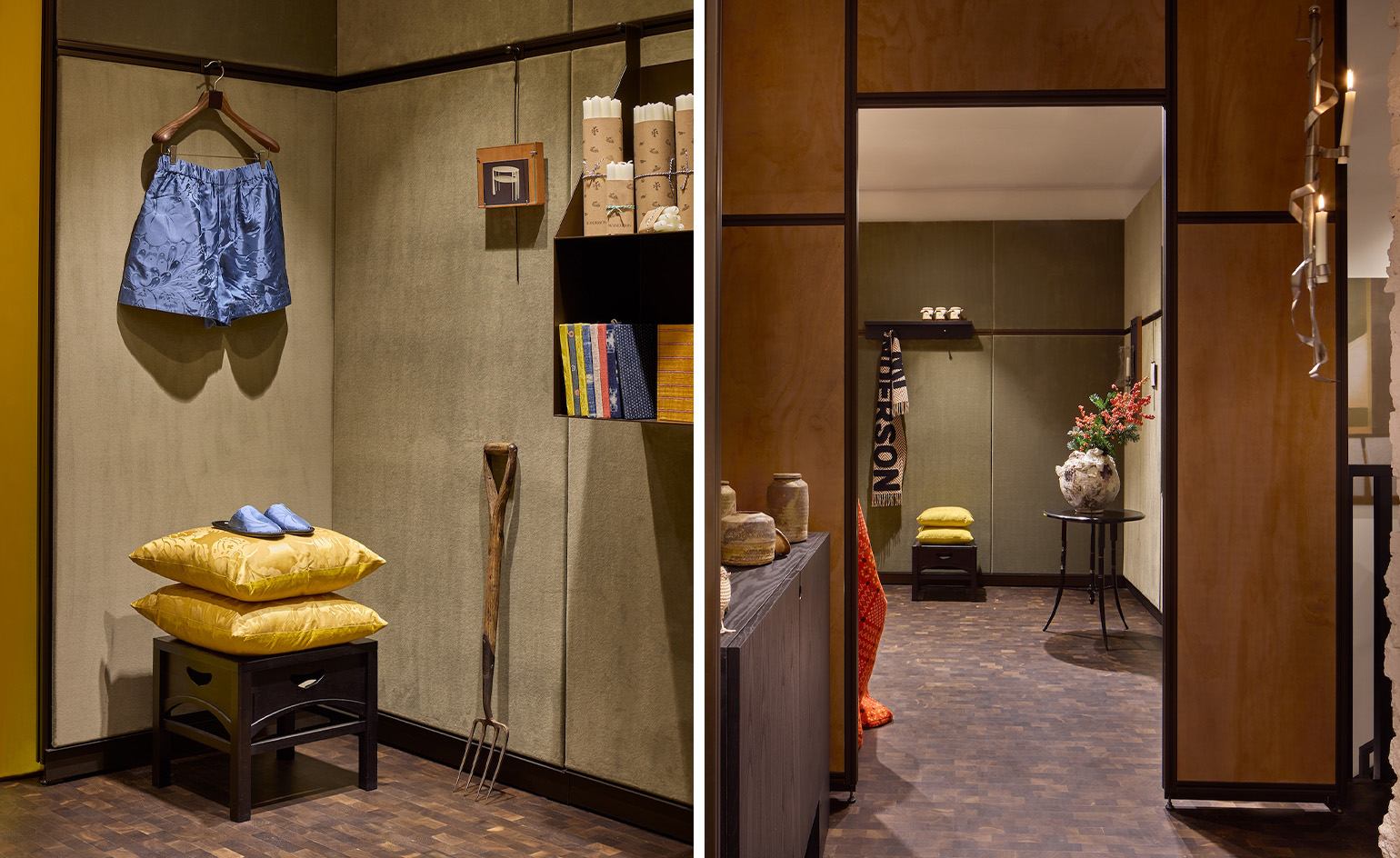 JW Anderson’s new London store is an inviting emporium of fashion, art and homeware
JW Anderson’s new London store is an inviting emporium of fashion, art and homewareThe idea of curation is at the heart of Jonathan Anderson’s refreshed vision for his eponymous label, one encapsulated in the new Sanchez Benton-designed store on Pimlico Road – a place where the designer’s passions and influences converge
-
 Free flights across Japan? ANA just made it happen
Free flights across Japan? ANA just made it happenA new All Nippon Airways scheme in collaboration with the Japan National Tourism Organization aims to ease overtourism in major hubs by boosting regional travel
-
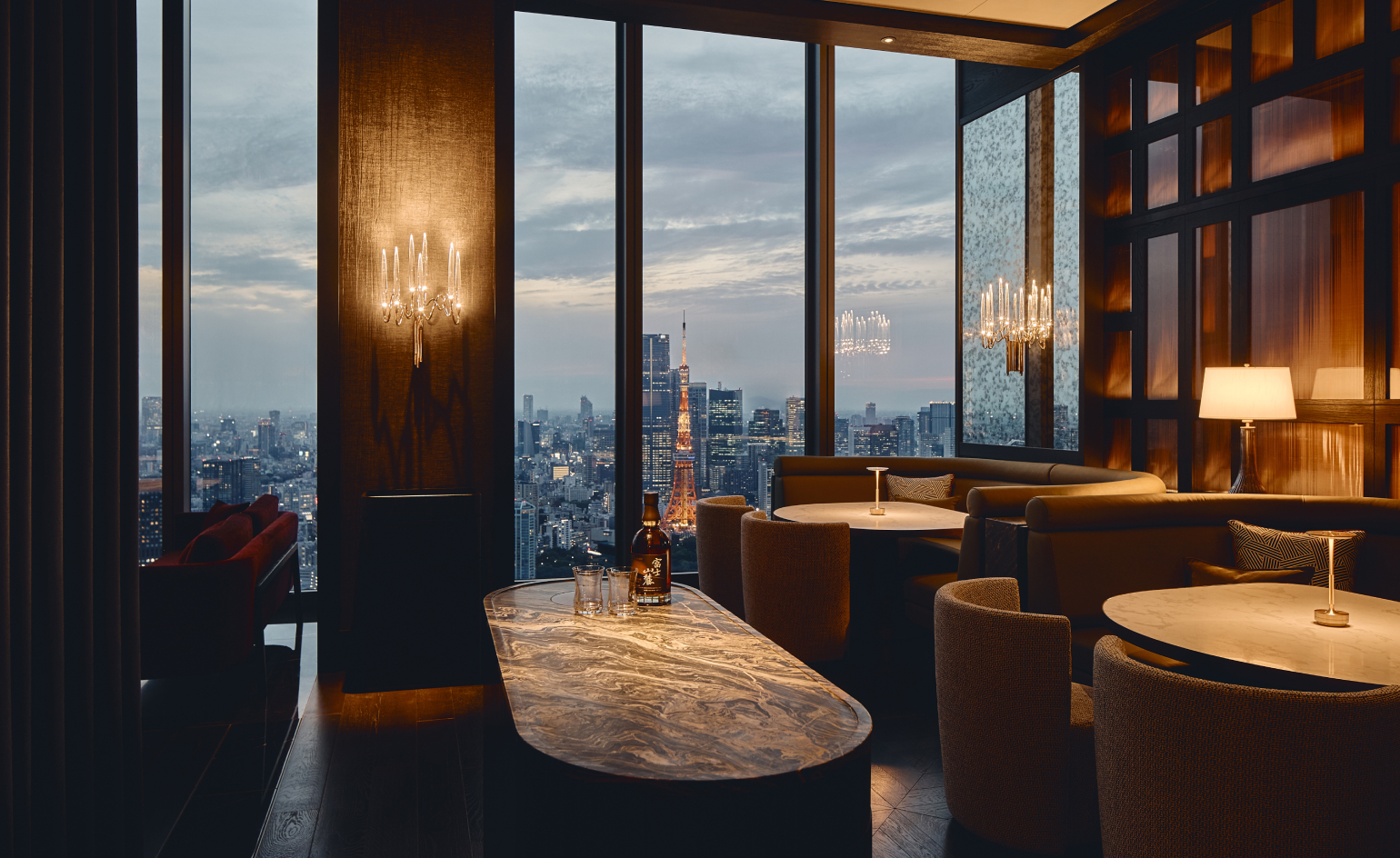 Is this Tokyo’s most alluring new hotel?
Is this Tokyo’s most alluring new hotel?In the world’s busiest capital, a new benchmark for serenity emerges 35 floors above ground. We checked into the Fairmont Tokyo
-
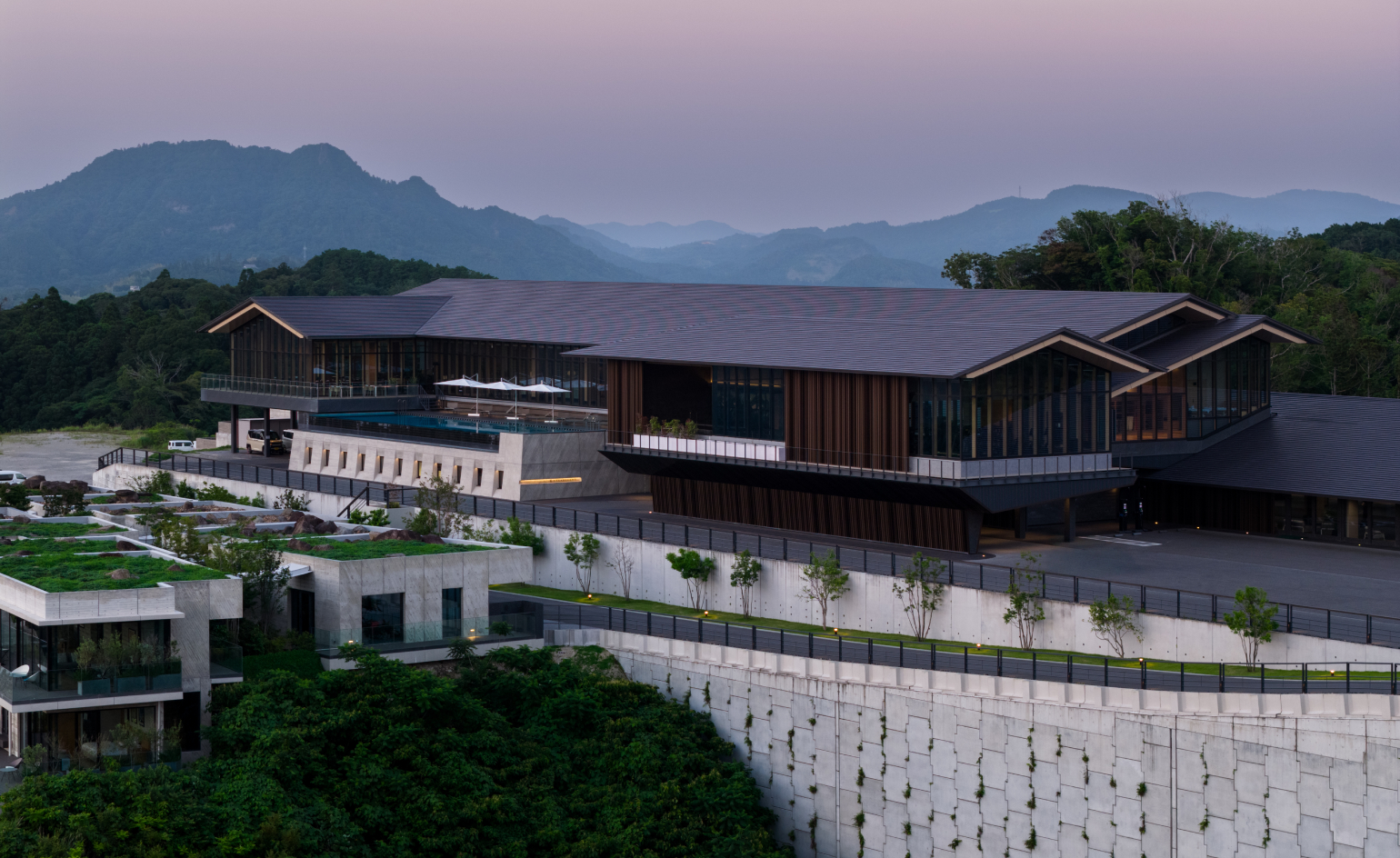 A cinematic members’ club rises in Japan’s forested hills
A cinematic members’ club rises in Japan’s forested hillsJoyce Wang Studio unveils The Magarigawa Club Clubhouse in Chiba
-
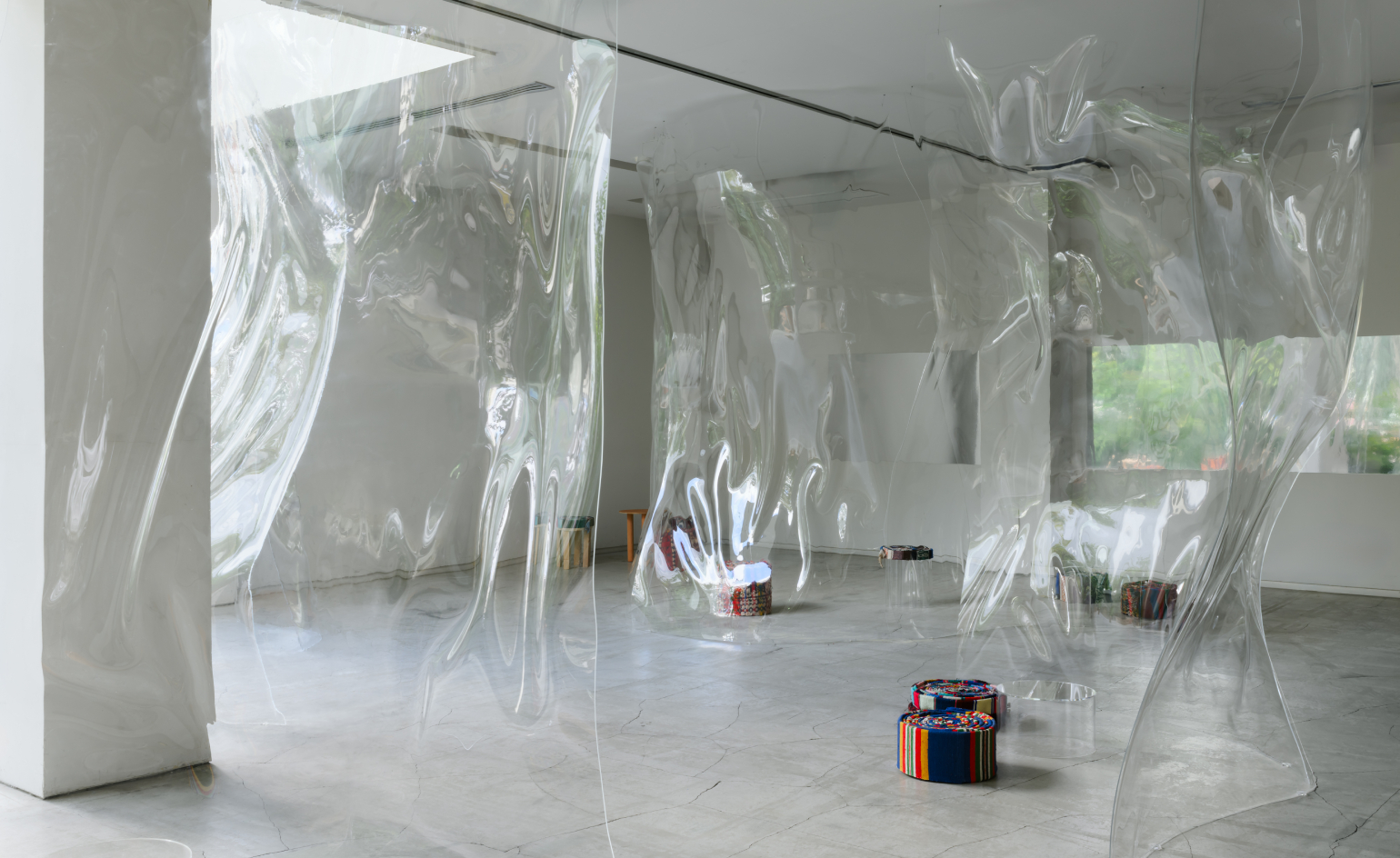 How Ichio Matsuzawa designed the almost-invisible bar defining Art Week Tokyo 2025
How Ichio Matsuzawa designed the almost-invisible bar defining Art Week Tokyo 2025During the 2025 edition of AWT, Wallpaper* met the Japanese architect to explore architecture as sensation, not structure
-
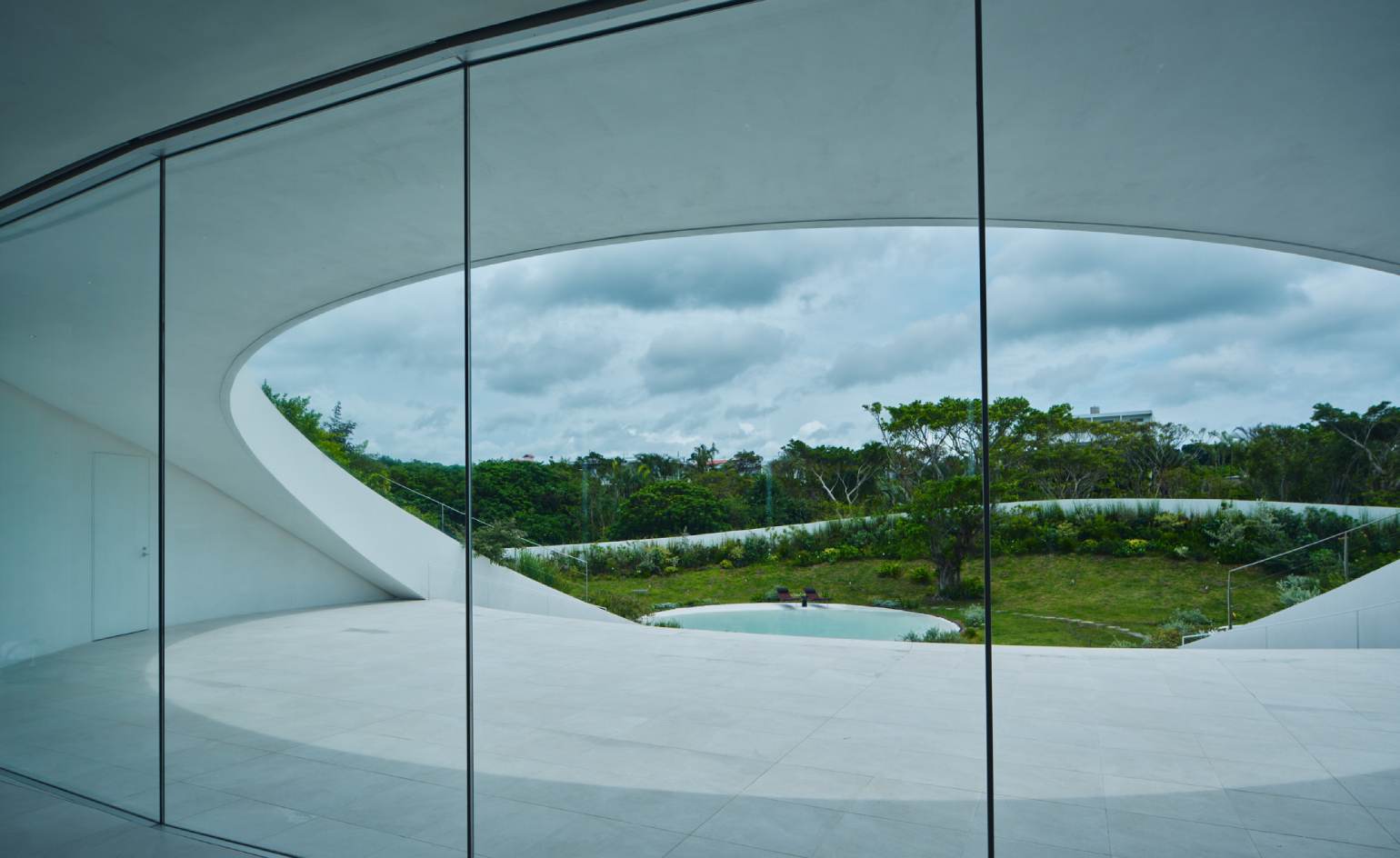 In Sou Fujimoto’s far-flung Not A Hotel villa, solitude feels almost planetary
In Sou Fujimoto’s far-flung Not A Hotel villa, solitude feels almost planetaryAn underwater sauna, an infinity pool and a circular courtyard garden are just a few of the highlights at Not A Hotel’s latest outpost, on Japan’s Ishigaki Island
-
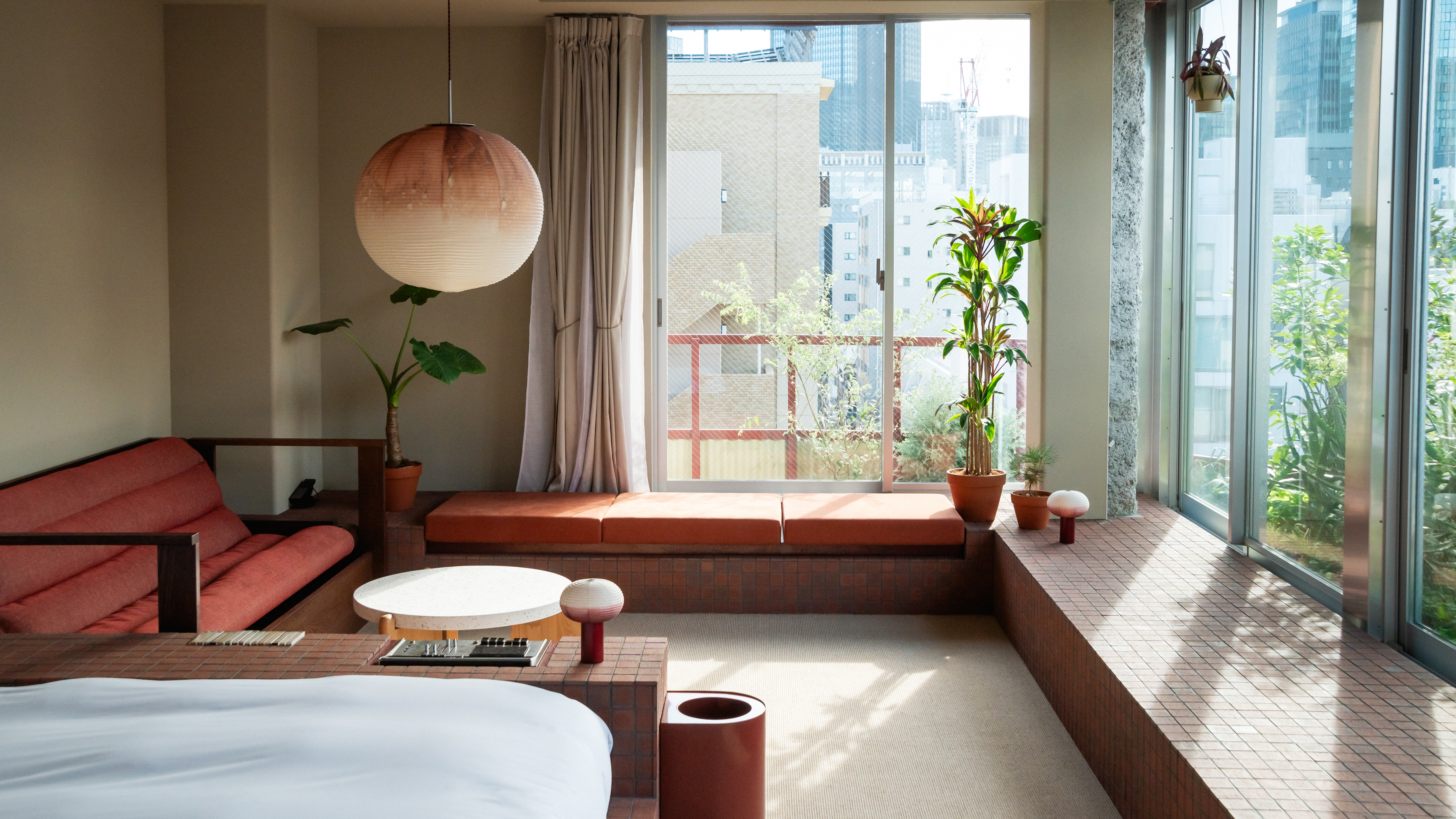 Check into a new pocket-sized Tokyo hotel
Check into a new pocket-sized Tokyo hotelSoil Nihonbashi Hotel brings greenery, warmth and a neighbourhood spirit to a quiet corner near Tokyo Central Station
-
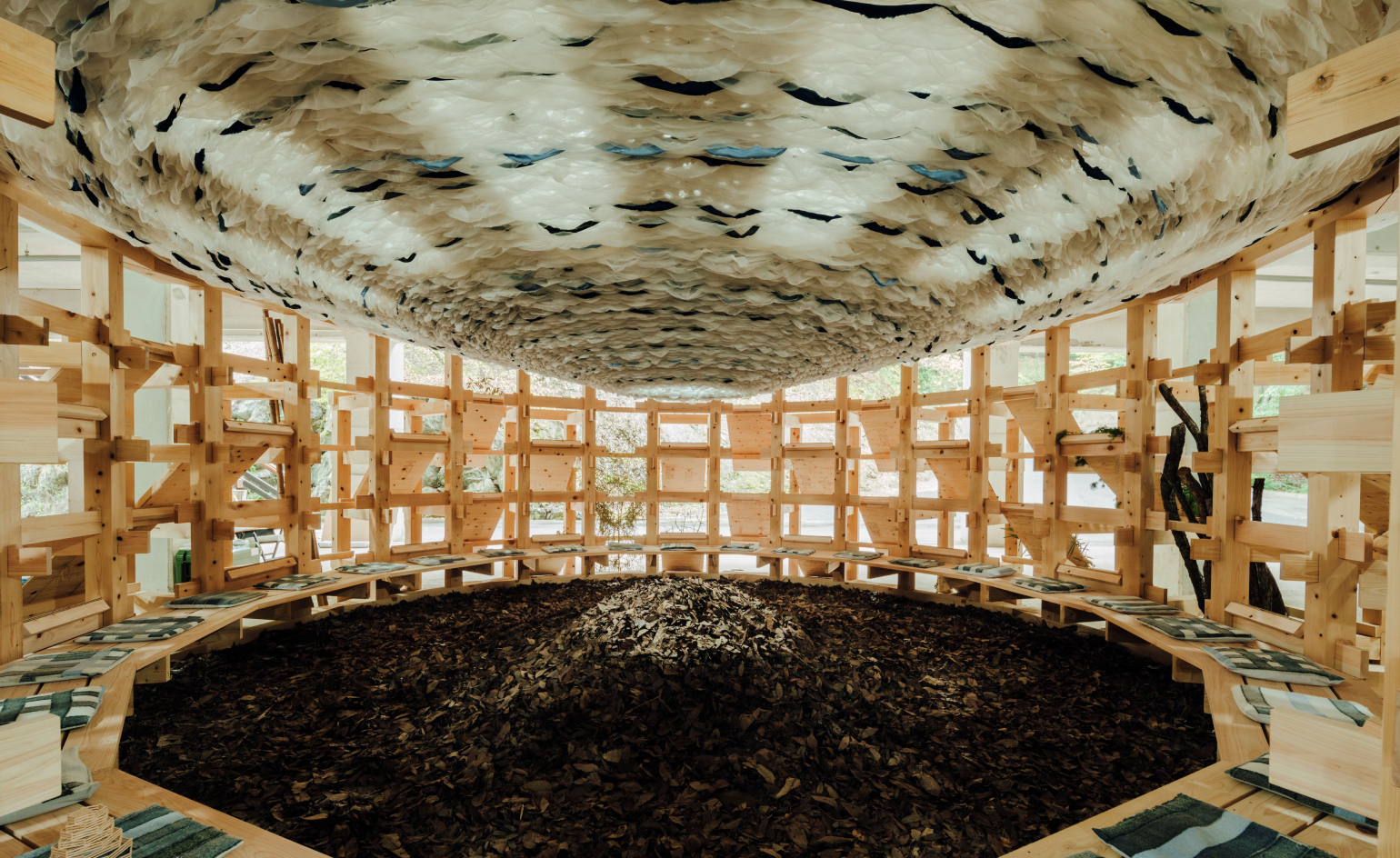 Explore Hiroshima through the eyes of those who rebuilt it
Explore Hiroshima through the eyes of those who rebuilt itJapan’s architectural phoenix continues to rise. ‘The Hiroshima Architecture Exhibition 2025’ explores a legacy of memory and modernism across 23 architects and artist groups
-
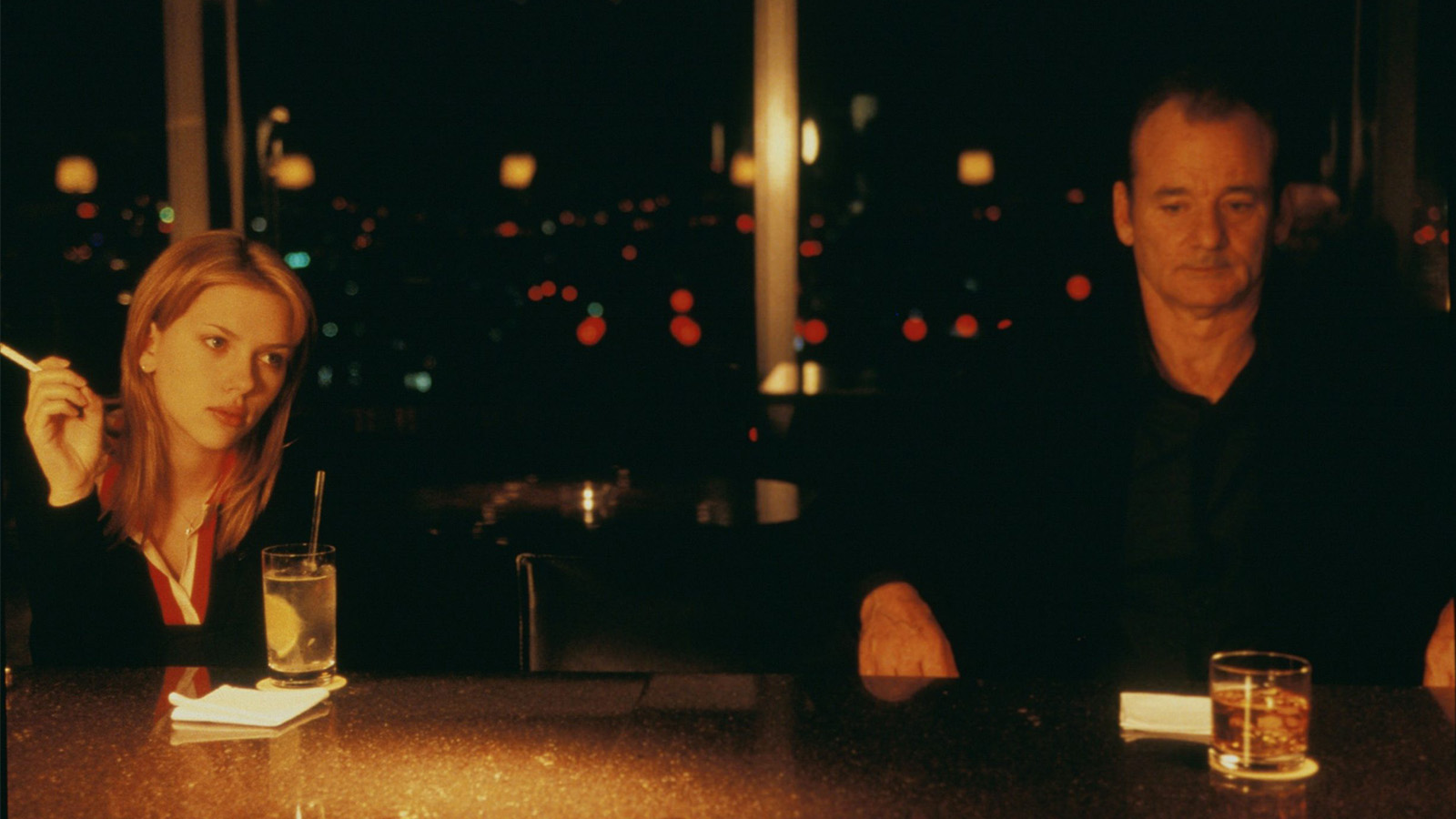 Will the revamped Park Hyatt Tokyo keep its cinematic soul?
Will the revamped Park Hyatt Tokyo keep its cinematic soul?As Park Hyatt Tokyo prepares to reopen after an extensive transformation, film fans wonder: will it still evoke Sofia Coppola’s dreamscape?